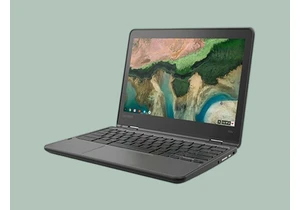If you want a gaming laptop that will play the latest and greatest triple-A titles, then you have to be prepared to spend accordingly. But that doesn’t mean you have to take out a mortgage. What if you keep things relatively reasonable? We looked into what $1,000 will really get you in a gaming laptop and the results are surprisingly good.
To get started, we spent time looking at 20 highly recommended gaming laptops released in the last year, and then discarded any recommendations that didn’t fit the criteria (such as Chromebooks). We paid attention to the five laptops features that matter most along with gaming-specific needs like graphics processing units (GPUs). And then we took note of any extras you might expect on a gaming laptop such as backlit keyboards and any unusual inclusions like Thunderbolt connections to get an idea of what you can truly hope to get without spending more than a grand. Here’s what we found.
Looking to pick up an affordable gaming laptop? Be sure to check out PCWorld’s roundup of the best gaming laptops under $1,000.
You’ll get plenty of RAM
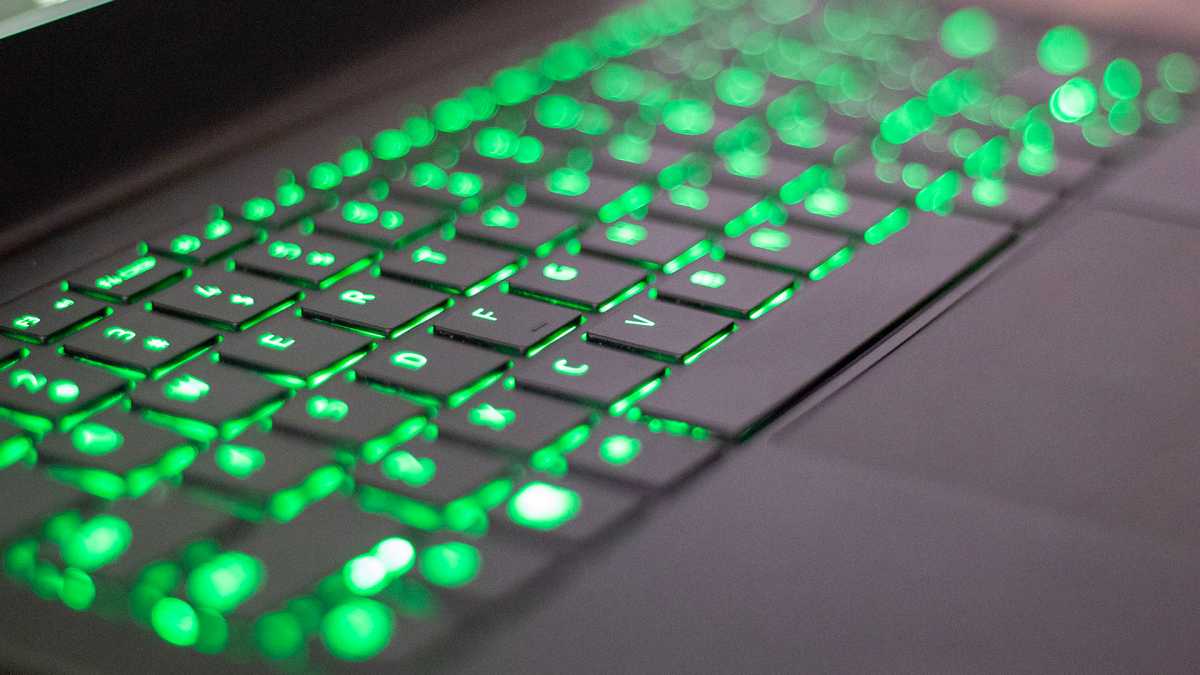
Josh Hendrickson/IDG
Josh Hendrickson/IDG
<div class="scrim" style="background-color: #fff" aria-hidden="true"></div>
</div></figure><p class="imageCredit">Josh Hendrickson/IDG</p></div>In general, if you’re buying an regular-work laptop, you shouldn’t settle for less than 8GB of RAM. If you want a chance of playing your favorite titles without getting bogged down, you need at least 16GB of RAM. If possible, more is better. It’s especially important to get this right on the first try because many laptops don’t have easy access to replace or upgrade the RAM and the same holds true for some gaming laptops.
The good news? Every $1,000 gaming laptop we looked at had a minimum of 16GB of RAM and quite a few had 32GB. Anything with 64GB of RAM is significantly more expensive. Even with 32GB, sometimes that came at the expense of another spec such as lower screen resolution or a smaller battery. Sometimes it’s a reasonable sacrifice like short battery life–you’re probably playing while plugged in anyway. Other times it’s the resolution, which may be a problem if your laptop monitor is your only monitor.
One thing is clear. If the gaming laptop you’re looking at only comes with 8GB of RAM, you shouldn’t buy it.
A decent GPU
If you want to game, you need a proper GPU in your machine. Most $1,000 gaming laptops come with an Nvidia RTX 3060, 4050, or 4060. But just because the number is bigger doesn’t mean it’s better. The RTX 4050, for instance, is best paired with a 1080p screen while the RTX 3060 can handle higher resolution displays. And the RTX 4060 isn’t significantly more powerful than the RTX 3060. In fact, in some tests older GPUs outperform the newer ones.
One thing to consider is that a laptop GPU is typically less powerful than the desktop counterpart. That’s down to space and heat considerations. A desktop has room for giant fans (or water cooling!) to move air around and dissipate heat. A laptop simply doesn’t have the same luxury. So, laptop GPUs are tuned to prevent overheating, which prevents them from reaching the same amount of power a desktop GPU can achieve.
<div class="wp-block-product-widget-block product-widget">
<div class="product-widget__block-title-wrapper">
<h4 class="product-widget__block-title" id="the-best-laptop-under-1000">
the best laptop under $1000 </h4>
</div>
<div class="product-widget__content-wrapper">
<div class="product-widget__title-wrapper">
<h3 class="product-widget__title" id="asus-tuf-gaming-a16-advantage-edition">Asus TUF Gaming A16 Advantage Edition</h3>
</div>
<div class="product-widget__image-outer-wrapper">
<div class="product-widget__image-wrapper">
<img decoding="async" width="4032" height="3024" class="product-widget__image" src="https://b2c-contenthub.com/wp-content/uploads/2023/04/20230424_094122.jpg?quality=50&strip=all" loading="lazy" alt="Asus TUF Gaming A16 Advantage Edition" srcset="https://b2c-contenthub.com/wp-content/uploads/2023/04/20230424_094122.jpg?quality=50&strip=all 4032w, https://b2c-contenthub.com/wp-content/uploads/2023/04/20230424_094122.jpg?resize=300%2C225&quality=50&strip=all 300w, https://b2c-contenthub.com/wp-content/uploads/2023/04/20230424_094122.jpg?resize=768%2C576&quality=50&strip=all 768w, https://b2c-contenthub.com/wp-content/uploads/2023/04/20230424_094122.jpg?resize=1200%2C900&quality=50&strip=all 1200w, https://b2c-contenthub.com/wp-content/uploads/2023/04/20230424_094122.jpg?resize=1536%2C1152&quality=50&strip=all 1536w, https://b2c-contenthub.com/wp-content/uploads/2023/04/20230424_094122.jpg?resize=2048%2C1536&quality=50&strip=all 2048w" sizes="(max-width: 300px) 100vw, 300px" />
</div>
</div>
<div class="review product-widget__review-details">
<img decoding="async" class="product-widget__review-details--editors-choice-logo" src="https://www.pcworld.com/wp-content/uploads/2021/09/PC-ED-CHOICE.png" alt="Editors' Choice" loading="lazy" /> <div class="product-widget__rating-and-review-link">
<div class="product-widget__review-details--rating">
<div class="starRating" style="--rating: 4.5;" aria-label="Rating of this product is 4.5 out of 5"></div>
</div> <a class="product-widget__review-link" href="https://www.pcworld.com/article/1801913/asus-tuf-gaming-a16-advantage-edition-review.html" target="_blank">Read our review</a>
</div>
</div>
<div class="product-widget__information">
<div class="product-widget__information--rrp-wrapper">
<span class="product-widget__information--rrp-label">
</span>
<span class="product-widget__information--rrp-value">
</span>
</div>
</div>
</div>
</div>It all boils down to personal preference and what you’re willing to give up. Laptops with the most powerful GPUs had a number of trade-offs such as smaller hard drives or fewer connectivity options. When it comes to gaming, resolution isn’t everything. You’ll probably be happier playing on a laptop display with a higher refresh rate and lower resolution (such as 1080p 30 fps) than the other way around (4K 15 fps), especially if that means you can enable graphical options like Ray Tracing.
We didn’t see many $1,000 gaming laptops with AMD GPUs. The AMD Radeon RX 7600S GPU, for example, performs similarly to the Nvidia RTX 4060 without Ray Tracing on. However, performance dropped with Ray Tracing enabled. That’s why we’d recommend sticking with Nvidia if ray tracing matters to you.
A fast, lower resolution display
There aren’t many $1,000 gaming laptops that offer a 4K display with high refresh rates. Most settled for 1080p 144hz displays, with the rare entry stepping up to 1200p. Those displays typically came in 15- or 16-inch flavors, so not getting 4K resolution isn’t a big loss. While you do sit closer to a laptop screen, that’s not a large enough size to get the most out of high resolution gaming. For that, you’d want to step up to an external monitor and then the mobile GPU would likely have a hard time keeping up.
What you usually won’t find on any $1,000 gaming laptop (or most other gaming laptops) is a touchscreen. That’s no loss, considering the purpose, and in fact may be a benefit. Touchscreens will reduce battery longevity (already an issue with gaming laptops) and the last thing you want is to accidentally brush the screen at a pivotal moment in a game and open a menu or accidentally turn your character away from your enemy. That’s how you lose last man standing.
You’ll probably also end up with an IPS display as well. While OLED would be nice for inky blacks in dark scenes, IPS is more than up to the task for most gaming. What you lack in contrast you usually make up in better refresh rates, so this is one sacrifice worth making to keep the cost down.
Fast storage, but watch the size
Let’s start with the good news. Most $1,000 gaming laptops will have an SSD drive. That’s good because you want quick speeds for better performance. An SSD will cut down load times, which really adds up with large open world games. But you’ll want to pay close attention to what kind of SSD the laptop uses. We saw a few SATA drive entries, which are slower than M.2 SSDs.
Budget gaming laptops tend to skimp out on storage size, too. While 1TB tends to be the norm, a few justified more powerful processors or 32GB of RAM by cutting the SSD back to 512GB. Depending on your gaming habits, that might not be enough, as some triple-A games exceed 100 and even 200GB. You’ll lose some space to the OS as well.
<div class="wp-block-product-widget-block product-widget">
<div class="product-widget__block-title-wrapper">
<h4 class="product-widget__block-title" id="the-most-portable-gaming-laptop-under-1000">
The most portable gaming laptop under $1000 </h4>
</div>
<div class="product-widget__content-wrapper">
<div class="product-widget__title-wrapper">
<h3 class="product-widget__title" id="msi-thin-gf63-2023">MSI Thin GF63 (2023)</h3>
</div>
<div class="product-widget__image-outer-wrapper">
<div class="product-widget__image-wrapper">
<img decoding="async" width="4367" height="2457" class="product-widget__image" src="https://b2c-contenthub.com/wp-content/uploads/2023/09/msi-gf63-thin-2023-review-5.jpg?quality=50&strip=all" loading="lazy" alt="MSI Thin GF63 (2023)" srcset="https://b2c-contenthub.com/wp-content/uploads/2023/09/msi-gf63-thin-2023-review-5.jpg?quality=50&strip=all 4367w, https://b2c-contenthub.com/wp-content/uploads/2023/09/msi-gf63-thin-2023-review-5.jpg?resize=300%2C168&quality=50&strip=all 300w, https://b2c-contenthub.com/wp-content/uploads/2023/09/msi-gf63-thin-2023-review-5.jpg?resize=768%2C432&quality=50&strip=all 768w, https://b2c-contenthub.com/wp-content/uploads/2023/09/msi-gf63-thin-2023-review-5.jpg?resize=1200%2C675&quality=50&strip=all 1200w, https://b2c-contenthub.com/wp-content/uploads/2023/09/msi-gf63-thin-2023-review-5.jpg?resize=1536%2C864&quality=50&strip=all 1536w, https://b2c-contenthub.com/wp-content/uploads/2023/09/msi-gf63-thin-2023-review-5.jpg?resize=2048%2C1152&quality=50&strip=all 2048w, https://b2c-contenthub.com/wp-content/uploads/2023/09/msi-gf63-thin-2023-review-5.jpg?resize=1240%2C697&quality=50&strip=all 1240w, https://b2c-contenthub.com/wp-content/uploads/2023/09/msi-gf63-thin-2023-review-5.jpg?resize=150%2C84&quality=50&strip=all 150w" sizes="(max-width: 300px) 100vw, 300px" />
</div>
</div>
<div class="review product-widget__review-details">
<div class="product-widget__rating-and-review-link">
<div class="product-widget__review-details--rating">
<div class="starRating" style="--rating: 3.5;" aria-label="Rating of this product is 3.5 out of 5"></div>
</div> <a class="product-widget__review-link" href="https://www.pcworld.com/article/2089524/msi-thin-gf63-2023-review-2.html" target="_blank">Read our review</a>
</div>
</div>
<div class="product-widget__information">
<div class="product-widget__information--rrp-wrapper">
<span class="product-widget__information--rrp-label">
Price When Reviewed: </span>
<span class="product-widget__information--rrp-value">
949 Euro </span>
</div>
</div>
</div>
</div>A powerful CPU… usually!
Most of the gaming laptops we looked at had a 13th-Gen Intel Core i5 or Intel Core i7 processor. That’s enough power for most gaming, so long as you have adequate RAM. On the AMD side, we regularly saw laptops with an AMD Ryzen 7 7840HS processor.
If you’re not sure whether to go with Intel or AMD, the answer is yes. The Ryzen 7 7840HS CPU performs similar to the Intel 13th-Gen Intel Core i7 equivalent. AMD performs better in multi-thread tests while Intel usually wins in single-thread tests. In theory, AMD’s processor should run a little cooler, but that may not pan out in real-world use because of the chassis and cooling systems.
Some ports and other goodies
Login to add comment
Other posts in this group
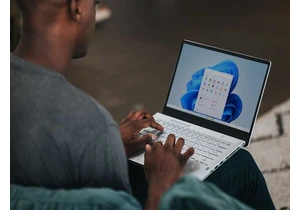

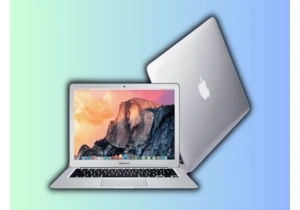
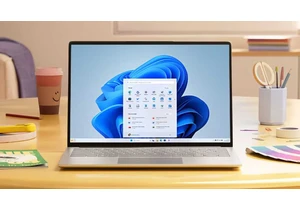
Microsoft has added an OCR function (Optical Character Recognition) t
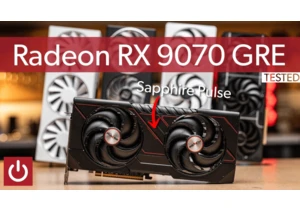
If you’re reading this anywhere outside of China, you probably haven’

